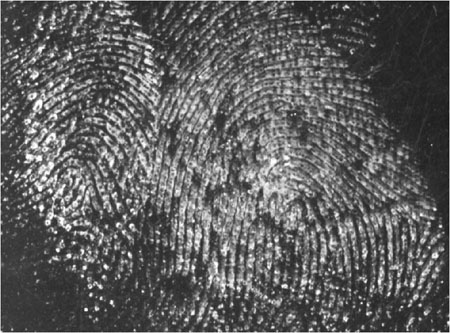On a porous surface, you have to find out whether or not the surface where the print was left was wet. If it was, more than likely the latent fingerprints will not turn up.

On nonabsorbent surfaces, after finding the fingerprint, put powder (white for dark surfaces, black for light colored/glass surfaces) over the print, then dust the extra powder away to make-out the print.
<! Hard surfaces, such as glass or tiles, you use powder. When choosing a powder to use for developing fingerprints, you’ll get a better result if you use a color that contrasts with your surface. For example, when you’re trying to develop a fingerprint on a window, you use a dark powder.
Smooth surfaces, like paper or cardboard, you use certain chemicals. One method is using iodine crystals. The reason why iodine is used is because it sublimes, meaning it can go from solid to vapor without turning into liquid.

If we didn't have these types of collecting techniques we would not find most of the prints that forenscis find today to catch a criminal.
Citations:
http://tnguyenforensics.blogspot.com/2009/08/techniqueschemicals-used-to-develop.html
No comments:
Post a Comment